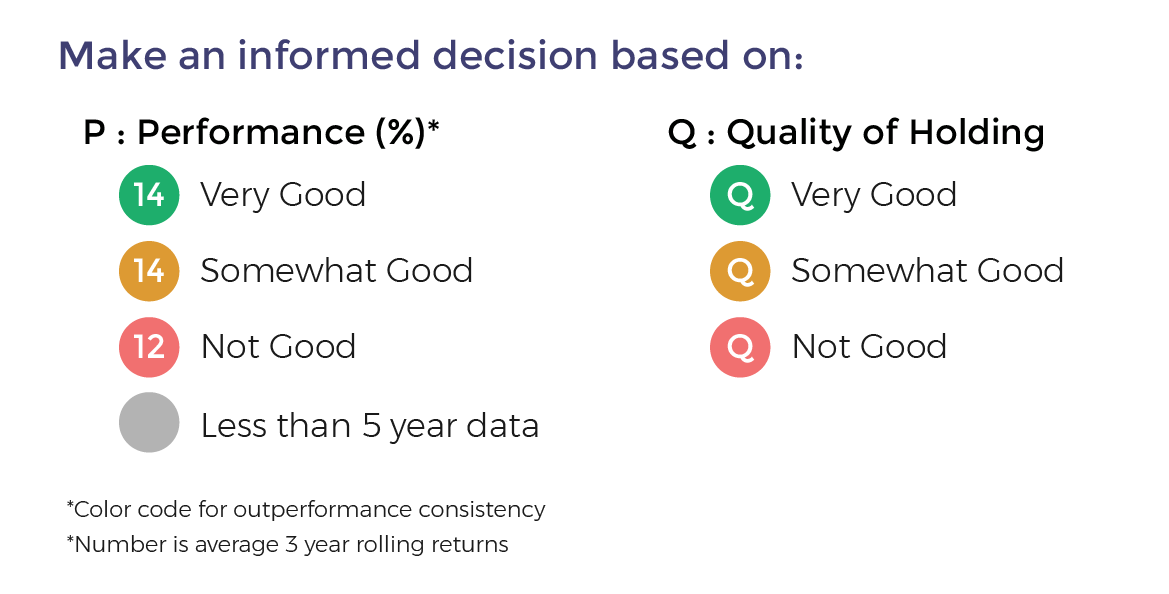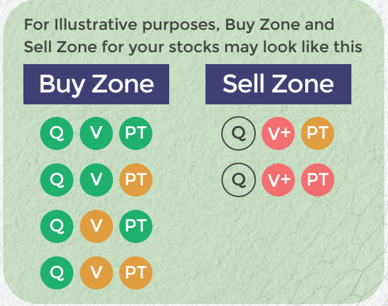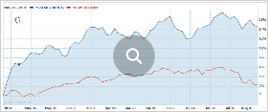Craftsman Automation
Craftsman Automation is coming out with a 100% book building; initial public offering (IPO) of 55,28,161 shares of Rs 5 each in a price band Rs 1488- 1490 per equity share.
Not more than 50% of the issue will be allocated to Qualified Institutional Buyers (QIBs), including 5% to the mutual funds. Further, not less than 15% of the issue will be available for the non-institutional bidders and the remaining 35% for the retail investors.
The issue will open for subscription from March 15, 2021 and will close on March 17, 2021.
The shares will be listed on BSE as well as NSE.
The face value of the share is Rs 5 and is priced 297.60 times of its face value on the lower side and 298 times on the higher side.
Book running lead manager to the issue are Axis Capital and IIFL Securities.
Compliance Officer for the issue is Shainshad Aduvanni.
Profile of the company
Craftsman Automation is a diversified engineering company with vertically integrated manufacturing capabilities, engaged in three business segments, namely powertrain and other products for the automotive segment (Automotive -Powertrain and Others), aluminium products for the automotive segment (Automotive - Aluminium Products), and industrial and engineering products segment (Industrial and Engineering). It is the largest player involved in the machining of cylinder blocks and cylinder heads in the intermediate, medium and heavy commercial vehicles segment as well as in the construction equipment industry in India. It is among the top three-four component players with respect to machining of cylinder block for the tractor segment in India. It is present across the entire value chain in the Automotive-Aluminium Products segment, providing diverse products and solutions. Its strong in-house engineering and design capabilities help it offer comprehensive solutions and products to its long standing domestic and international customers in each of the segments in which it operates.
The company’s comprehensive solutions include design, process engineering and manufacturing including foundry, heat treatment, fabrication, machining and assembly facilities. Its core competence in machining and assembly of industrial and engineering products has helped it to first establish itself as a significant player in the Automotive - Powertrain and Others segment. Its key products in this segment are highly engineered and include engine parts such as cylinder blocks and cylinder heads, camshafts, transmission parts, gear box housings, turbo chargers and bearing caps. The end users for its products include OEMs producing commercial vehicles, special utility vehicle, tractors and off-highway vehicles. Additionally, it also provides machining services within its Automotive – Powertrain and Others segment. Over the years, it has been instrumental in import substitution for critical powertrain parts.
Proceed is being used for:
Repayment/pre-payment, in full or part, of certain borrowings availed by the company.
General corporate purposes.
Industry overview
The Indian auto components industry clocked a CAGR of 6% in production over fiscals 2015 to 2020, led by growth in replacement and exports demand. Domestic demand is forecast to log a CAGR of 6-8%, driven by demand from OEM at 7-9%, whereas exports are set to grow at 3-5% over fiscals 2020 to 2024. The two-wheelers dominate the Indian auto industry (80% by volume) and primarily dictates the tone for the sector. Over fiscals 2015-2020, two-wheeler sales registered 1.7% CAGR, passenger vehicles (PVs) 1.3%, commercial vehicles (CVs) by 3.2% and tractors 5.2%. In fiscal 2020, all segments saw a decline in sales due to slowdown in economy and transition to BS-VI norms. The decline in two-wheelers and PVs was 18%, commercial vehicles (CVs) 29% and tractors 10%. The passenger vehicle industry registered 1.3% CAGR over fiscal 2015-2020. In fiscal 2020, the industry saw a decline of 18% on account of inventory adjustment due to BS-VI norms and decline in consumer sentiment. Two-wheeler exports from India grew 7% in fiscal 2020 over a high base of 16% growth in fiscal 2019 due to strong demand from African markets, primarily Nigeria and Uganda. The efforts of original equipment manufacturers (OEMs) to diversify into more promising geographies aided exports. Most of the export markets such as African nations are crude oil-driven and commodity-linked economies. With crude oil prices hitting multi-decade low in fiscal 2021, demand from these markets remains a key monitorable.
The power train market is expected to clock 12-14% CAGR during fiscals 2020 to 2024. Fiscal 2021, though, is expected to be affected by a drop in domestic demand as well as subdued exports owing to disruptions in the economies caused by the Covid-19 pandemic globally. The cost of key raw materials such as aluminium, iron, and steel will also have a bearing on the cost of powertrain components. After rising at 5-6% CAGR from fiscal 2016 to 2019, domestic ex-factory aluminium prices crashed 12-14 % in fiscal 2020 as demand from the automobile sector was subdued on account of poor vehicle sales. In the year-to-date fiscal 2021 period, aluminium prices have remains largely similar to average levels seen last year. In automobiles, a powertrain generates power and transmits it to the wheels. It can be broadly classified into four components - (i) engine and engine parts, (ii) transmission, (iii) driveshaft, and (iv) rear axle. The engine burns the fuel to produce mechanical power. It comprises several critical components, including cylinder block, cylinder head, and crankshaft, pistons, camshaft, and engine valves.
Pros and strengths
Diversified engineering company with focus on providing comprehensive solutions: The company offer comprehensive one-stop solutions to its customers including design, process engineering and manufacturing including foundry, heat treatment, fabrication, machining and assembly facilities. It is diversified across end-user industries and cater to commercial vehicles, two wheeler, tractor and other segments. For instance, it manufactures cylinder blocks, cylinder heads and transmission parts which are required for tractors and trucks as well as crank cases, which are required for two wheelers. It caters to a wide customer base across various industry segments and offer a diverse suite of products to its customers. It actively pursues cross selling opportunities across segments to derive value for its existing and prospective customers. This not only helps it in solving complex customer problems that require multi-domain expertise but also helps it in penetrating customers’ different business segments and enhance its capabilities to collaborate with OEMs right from the designing of their new products. Its diversified presence across various segments and design capability provides it with the flexibility to operate successfully across business cycles and mitigate any fluctuations in the industry.
Strong in-house process and product design capabilities: The company is present across various levels of the component value chain, providing products and services that range from product design, prototyping, tool development, manufacturing, assembly and production of integrated components, reducing or minimizing its use of, or reliance on, externally sourced components. Over the years, it has engaged with its customers from their early product design stage and has developed extensive process and product design capabilities and domain knowledge, particularly for niche, intricate, complex and highly critical automotive and non-automotive components, such as powertrain cylinder blocks and heads and camshafts, enabling it to respond to customer specifications and provide quality products and service in a timely and cost-effective manner. Its diversified presence across various levels of the component value chain and design capability is unique across the competitive landscape.
Long term and well-established relationships with marquee domestic and global OEMs: The company has strong and well-established relationships with several marquee domestic and global OEMs as well as component manufacturers, including certain of its key customers, to which it has been supplying its products and solutions for over 10 years, such as Tata Motors and Tata Cummins. Its key customers include Daimler India, Tata Motors, Tata Cummins, Mahindra & Mahindra, Royal Enfield, Mitsubishi Heavy Industries, Siemens India, Escorts, Ashok Leyland, Simpson & Company, TAFE Motors and Tractors, Perkins India, John Deere and JCB India. It has significant presence and customer relationships in each of its business segments and are considered as a strategic and preferred supplier by many of its OEM customers. It is also the single source supplier in certain product categories, for some of its key customers. Its success in leveraging its strong customer relationships is illustrated in the growth of its business over the years.
Extensive manufacturing footprint, with strategically located manufacturing facilities: The company owns and operates 12 strategically located manufacturing facilities across seven cities in India, with a total built up area of over 1.5 million sq. ft. Its facilities are equipped with advanced machinery and certain of its facilities are located close to its key customers to enable meeting its customers’ just-in-time delivery schedules, allow economies of scale and logistical advantages for its customers, and to insulate them from local supply or other disruptions. Its in-house engineering and design capabilities allow it to offer comprehensive solutions including design, process engineering and manufacturing including foundry, heat treatment, fabrication, machining and assembly to its long standing domestic and international customers. It has recently set up a new unit in Pune with high end fully automated equipment from Italian and Swiss manufacturers. This facility, which commenced operations in 2019, enables it to service the storage solutions market, catering to customers across India.
Risks and concerns
Operate in competitive business environment: The company operates in a competitive business environment, particularly in certain business segments such as the manufacture and sale of aluminium castings in the Automotive - Aluminium Products segment, material handling systems in the Material handling sub-segment and storage systems in the Storage solutions sub segment. Growing competition in the domestic and/or international markets may subject it to pricing pressures and require it to reduce the prices of its products in order to retain or attract customers, which may have an adverse effect on its revenues and margins. While the company is focused in the development of customer-centric products, and to broaden its product range, in the event its competitors harness better process technology or improved process yield or are able to source raw materials at more competitive prices, it may not be able to maintain its growth rate and its revenues and profitability may decline.
Depends on growth of key customers: The company’s growth depends on the growth of its key customers. If its key customers do not successfully enter into and retain market share in high-growth segments, it may be prevented from capitalizing on new growth opportunities. Since it is significantly dependent on certain key customers for a significant portion of its sales, the loss of any one of its key customers, a significant reduction in demand from such customers or the downturn in business by such customers could have an adverse effect on its business, results of operations and financial condition. It may continue to remain dependent upon its key customers for a substantial portion of its revenues. In the event of its failure to retain one or more of its key customers, it will have an adverse effect on its financial performance and result of operations.
Incurred significant capital expenditures in the past: The company has already incurred significant capital expenditure in the past few years, including setting up an entire range of facilities such as no-bake sand foundry, high pressure, low pressure and gravity die casting capabilities for production of various types of aluminium castings for different applications for its customers, allowing it to offer a diverse product suite, reduce operating costs and drive its productivity. To compete effectively, it must be able to develop and produce new products to meet its customers’ demand in a timely manner, which requires a significant capital expenditure. It may also be required to make substantial investments to adapt to the expansions plans made by its existing OEM customers to ensure continuity in business from such OEM customers, however there is no assurance that such investments will be as profitable as its existing business and investments, or at all. Further, it may incur significant costs in supplying OEM products from such locations to other customers. Further, it may not be able to take on new opportunities from its existing OEM customers if such opportunities do not offer attractive value proposition or commercial viability.
Dependent on third party transportation for delivery of raw materials: The company’s success depends on the smooth supply and transportation of the various raw materials required for its various manufacturing facilities which is subject to various uncertainties and risks and finished products. It uses third party transportation providers for the supply of most of its raw materials. Transportation strikes have had in the past and could again have in the future, an adverse effect on supplies from its suppliers. In addition, raw materials and finished products maybe lost or damaged in transit for various reasons including occurrence of accidents or natural disasters. There may also be delay in delivery of raw materials and finished products which may also affect its business and results of operation negatively. A failure to maintain a continuous supply of raw materials could have a material and adverse effect on its business, financial condition and results of operations.
Outlook
Incorporated in 1986, Craftsman Automation is a leading engineering organization that is engaged in manufacturing precision components. The company designs, develop, and manufactures a range of engineering products. It is one of the leading players in the machining of cylinder blocks for the tractor segment. The business operates 3 key segments namely Automotive-Powertrain and others, Automotive-Aluminium Products, and Industrial and Engineering division that is engaged in manufacturing material handling equipment i.e. hoists, industrial gears, marine engines, crane kits, gearboxes, locomotive equipment, storage solutions, etc. The company owns and operates 12 strategically located manufacturing facilities across seven cities in India, with a total built up area of over 1.5 million sq. ft. The company benefit significantly from its strong management and technical teams, which include individuals with specialized training and/or substantial experience. On the concern side, the company’s business is continually changing due to technological advances and scientific discoveries. These changes result in the frequent introduction of new products and services and significant price competition. If its products and technologies become obsolete for various factors, its business and results of operations could be adversely affected. Besides, it requires substantial power and fuel for its manufacturing facilities, and energy costs represent a significant portion of the production costs for its operations.
The issue has been offered in a price band of Rs 1488- 1490 per equity share. The aggregate size of the offer is around Rs 822.59 crore to Rs 823.69 crore based on lower and upper price band respectively. On the performance front, the company’s total income decreased by Rs 3,305.86 million, or 18.05%, from Rs 18,316.43 million in Fiscal 2019 to Rs 15,010.57 million in Fiscal 2020. Its profit after tax decreased by Rs 562.94 million, or 57.82%, from Rs 973.67 million in Fiscal 2019 to Rs 410.73 million in Fiscal 2020. The company intends to strengthen its relationships with its existing customers and explore opportunities to grow along the value chain by expanding the array of its existing products and solutions that it supply to its customers across geographies, and to win new customer contracts by developing products and solutions aligned with their needs. It intends to continue enhancing its operational efficiencies, to increase economies of scale, better absorb its fixed costs, reduce its other operating costs and strengthen its competitive position. It would focus on improving capacity utilization at its production facilities, through increase in its overall production volumes.































